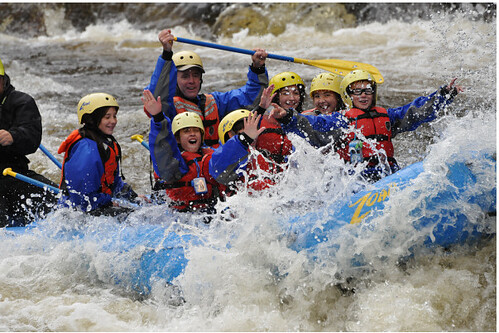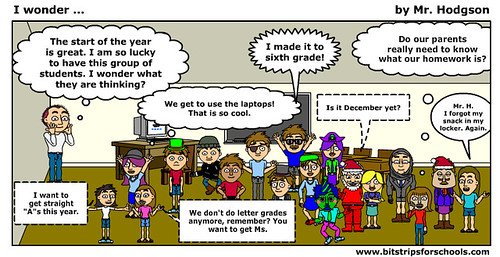I am in the third year of some form of co-teaching, where I have teamed up with a special education teacher to collaboratively teach a Language Arts class where the student population is a mix of both those in the mainstream and those on educational plans.
The first year, the partnership felt too harried. My co-teacher that year did her best, and I did my best, but we both agreed that it never quite clicked the way we wanted it to, mostly because we were on our own to sort it all out. Literally, we’d be doing planning when we met in the hallways between classes. She is a great teacher. Time was our problem.
Last year, our special education teacher — Bob — taught with me every day for one of our four Language Arts blocks, and although we were still finding our way, it worked. The students in that class of high needs mixed with others on education plans were engaged, and they all benefited from one-on-one attention given by the both of us (at one point, we had three of us teachers — the third was our ELL specialist).
Bob and I are at it again this year, and while there are still plenty of ways our co-teaching model could be a lot better (such as shared planning times during the day, which the administration has not been able to provide), I want to sing out the praises of my colleague, Bob, today.
- I learn something about teaching from him just about every day. He uses more visuals for learning than I do and he comes at our reading text from different angles. He’s folksy in his approach, with humor sprinkled amidst everything he does. He’s also not afraid to admit to the students when he doesn’t know something. I try to use parts of his teaching style with my other three classes, and it works.
- He’s a conduit between us in sixth grade and our colleagues in fifth grade. Bob is also a co-teacher in fifth grade, and so he brings ideas and strategies (and curriculum ideas) from them to us, and back again. I can’t stress enough how valuable this is. I have already seen an overall improvement in all of my new sixth grade writers because of the work done last year in fifth grade, and that is partially a result of Bob helping the fifth grade Language Arts teacher know some of the expectations of sixth grade (in a positive way) and letting me know what my fifth grade colleague is up to. We don’t get enough of that vertical communication.
- He’s not afraid to share the stage. The two of us, Bob and I, have a good mix of personalities, I think (so, maybe he feels different … naw), and both of us willingly and often cede the floor to the other, so that class is mostly a seamless flow between two teachers. He is not an aide. He is not support staff. He is the teacher.
- He makes time for planning and connecting. I get to my school early in the mornings. Bob is usually already there. It’s in that time we do some planning for the day and the days ahead. Even if it is only for a few minutes, this time to chat is crucial to co-teaching. Ideally, it would be a block of time during the day. (Note to self: don’t let Bob be the one who always come to your room; make sure you go to him.)
- The core of his teaching is all about differentiated learning. Since his main focus and years of experience has been with students with learning difficulties, Bob’s style is to come at teaching from all angles, trying to hook learners of all styles. We can talk about differentiated learning all we want, but I get to see it in action with Bob, and I tuck away his ideas. He’s not afraid to try something new, and see what happens. And he’s reflective in his practice.
- We’re revamping the focus of ELA, together. Last year, after looking over various student data, we saw some real weaknesses overall in students when it came to reading, particularly around responding to literature. So, Bob and I began the task of revamping our curriculum. We created an adaptable rubric, began modeling writing responses, and developed (and still are) lesson plans that help our students push themselves as writers. Having Bob as a partner in that has been incredibly valuable.
- He values my ideas and teaching practices. It used to be that the students who were in pull-out special education services would be in an entirely different world. Bob (along with his colleague, Stacey) has changed that for our sixth grade. Not only does he bring ideas from the Learning Center into the mainstream classroom, but he is constantly pulling ideas from my classroom (mostly around writing and technology ) back into his smaller group Language Arts sessions. Those students don’t feel left out; they feel they are part of what we are doing in the larger classes.
I could go on.
I know I still have a lot to learn about sharing the classroom, and being open to the negotiations around learning. I hope I am doing better at that this year than I was last year. I realize, too, that it helps that Bob is a friend, and that we get along. If my co-teacher were someone that I struggled with on a personal or professional level, our system would not work, because it is built on conversations, sharing and trust. The fact that we don’t have a formal structure in place for co-teaching worries me.
So, Bob, don’t go anywhere, all right?
Peace (in the praise of a colleague),
Kevin



